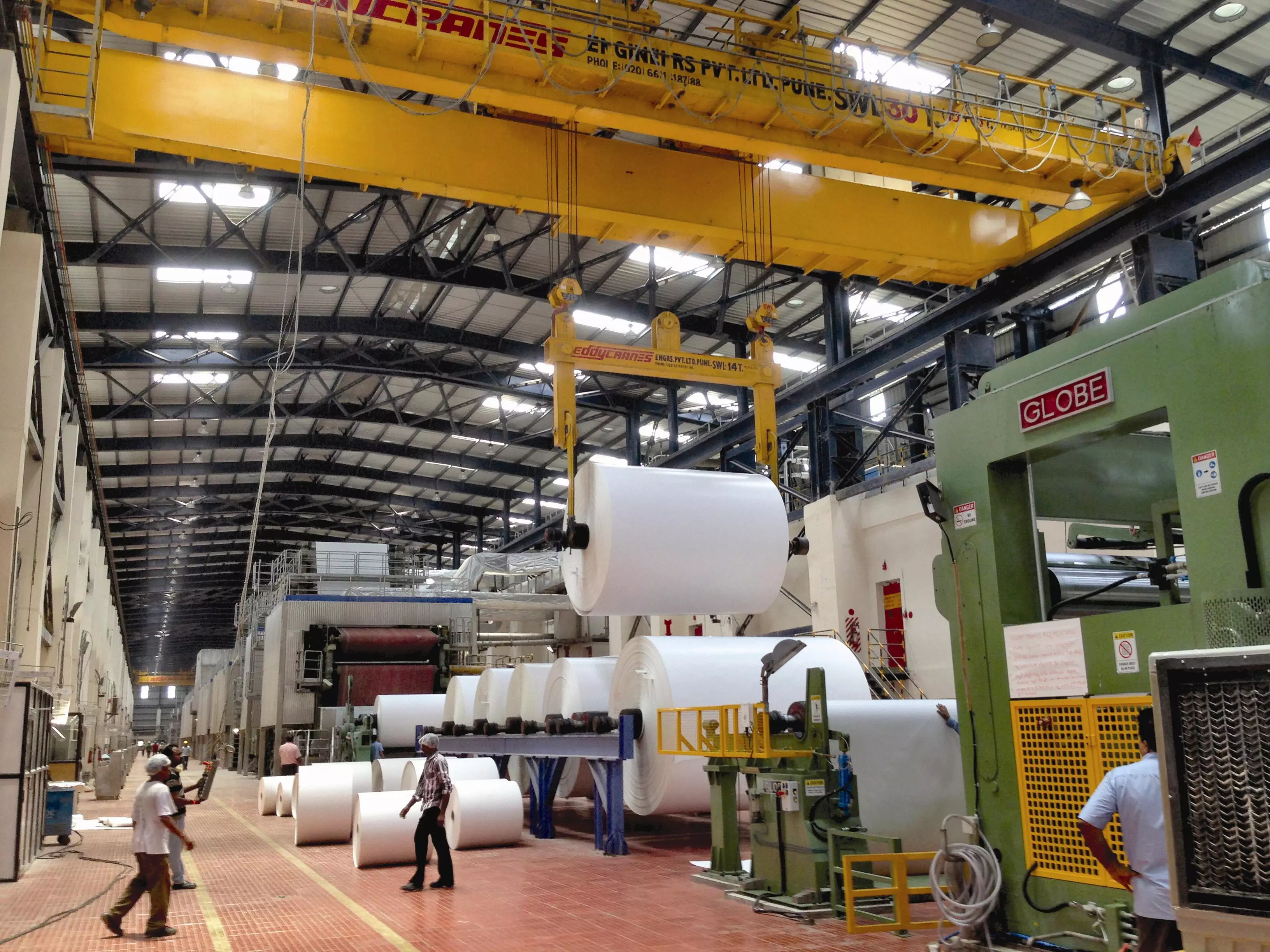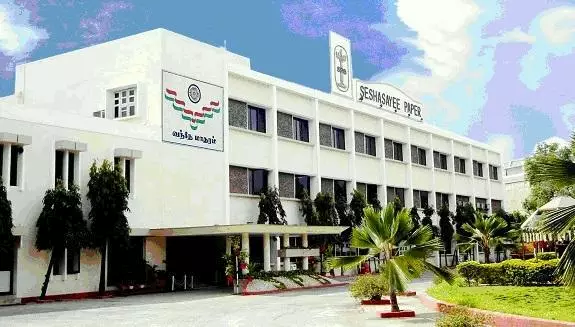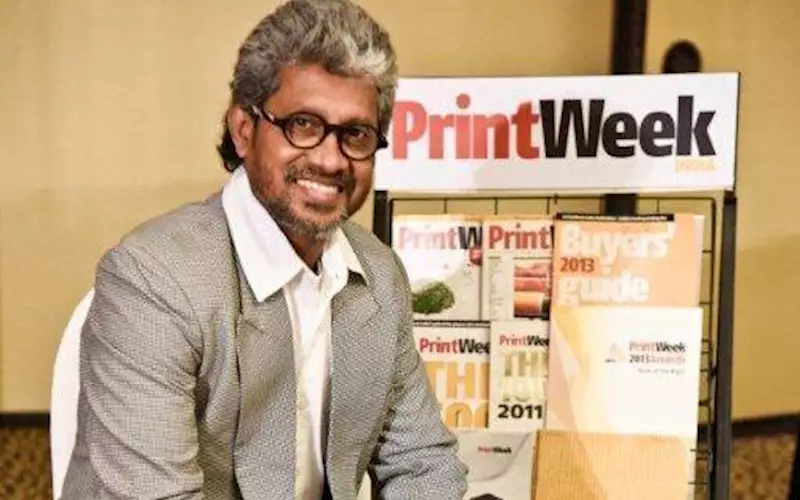All about paper tigers and the run of the mills - The Noel D'Cunha Sunday Column
Paper mills are pumping big bucks and accompanied by new products, are providing options to print companies to take advantage of the expected rise in paper consumption. And yet, the last few months haven’t hit the sweet spot, say Nimesh Vora of Srinivas Papers and Subodh Jain, director, Kraftile International. This Sunday Column discusses the present state of paper market and what more should the mills do to attract print companies to buy more
10 Jul 2015 | By Noel D'Cunha
The consensus is that the Indian printing market is looking up. And this was evident during the successful PrintPack India 2015. Followed by two smaller shows in Mumbai and Chennai.
But are the numbers adding up?
During a conference of Indian paper industry in Chennai late last year, a presentation quoted the expected consumption of paper and board in India to grow over 20-million tonnes by 2020. The present installed capacity is 13.5-million tonnes.
In the last five years or so, the paper sector has invested Rs 20,000-crore towards capacity enhancement, technology upgrade and acquisitions. As a result, it has added manufacturing capacity of a CAGR of 11%. The sector had added one million tonnes of capacity in 2013.
Installations and expansions

Ballarpur Industries (BILT) completed a large USD 850-million expansion programme undertaken in the last few years across key capacities in February 2014.
According to Gautam Thapar, chairman of BILT, the company completely integrated pulp and paper set up that can best leverage the growth in the Indian market for paper — a market that is growing much faster than the developed world and, given the expectation of higher DP growth going forward, assumes significance. “I believe that BILT is well positioned in one of the fastest growing paper markets of the world, the more so in an environment where the global paper industry is going through a very difficult phase with contraction in total production and even consumption,” he had said.

Also JK Paper was setting up a new 1.65 lakh tonnes per annum paper plant at its existing unit in Rayagada in Odhisa. For this, the company planned to invest Rs 1650 crore. JK Paper holds 28% of market share of Indian paper industry. The project was to go on steam in early 2013 and with this, the total company capacity was to be enhanced to 4.55 lakh per annum.
The mills use a variety of raw material, such as wood, bamboo, recycled fibre, bagasse, wheat straw and rice husk. Statistically speaking, approximately 31% are based on wood, 44% on recycled fibre and 25% on agro-residues. The geographical spread of the industry, as well as the market, is mainly responsible for regional balance of production and consumption.
Q4 2015 results
The Q4 results of 2014-15 were a mixed bag for paper and board manufacturers. We tracked a few paper and board companies. While Pudumjee Pulp Paper Mills, the specialty paper manufacturers, BILT, JK Papers, and TNPL made its way to the profit books, Seshasayee Paper and Boards' and Sree Sakthi Paper Mills' balance sheet were tepid.
Pudumjee’s standalone net profit rose by 30.60% to Rs 14.47-crore in the quarter ended March 2015 as against Rs 11.08-crore during the previous quarter ended March 2014. Sales rose 29.25% to Rs 68.45-crore in the quarter ended March 2015 as against Rs 52.96-crore during the previous quarter ended March 2014.
BILT reported a consolidated net profit of Rs 27.55 crore for the quarter ended March 2105. The company's net sales, on a consolidated basis, were Rs 1,231.31 crore during the quarter, as against Rs 1,354.29 crore in the January-March period of 2013-14.
JK Papers, on the other hand, reported a standalone net profit of Rs 18.07 crore for the fourth quarter of 2015. The company’s total income on a standalone basis also increased by 13.40 per cent to Rs 581.91 crore during the January-March quarter as against Rs 513.13 crore for the same period a year ago. The result has narrowed down its consolidated net loss to Rs 18.39 crore as against Rs 74.72 crore in the previous fiscal.
JK Paper managing director Harsh Pati Singhania said, “The improvement in performance is all round, emanating from higher production and sales, better product mix, and improved operating efficiencies.
TNPL reported a standalone total income from operations of Rs 703.07 crore and a net profit of Rs 69.34 crore for the quarter ended Mar '15. Other incomes for the quarter was Rs 13.61 crore.
 Seshasayee Paper and Boards (SPB) standalone net profit declined 77.07% during the quarter ended on March 2015. Sales rose 8.00% to Rs 305.15-crore in the quarter ended March 2015 as against Rs 282.54-crore during the previous quarter ended March 2014.
Seshasayee Paper and Boards (SPB) standalone net profit declined 77.07% during the quarter ended on March 2015. Sales rose 8.00% to Rs 305.15-crore in the quarter ended March 2015 as against Rs 282.54-crore during the previous quarter ended March 2014.
Sree Sakthi Paper Mills (SSPM), which operates two kraft paper units and one duplex board unit in Kerala, is a second down in the list.
The company sales declined 5.45% to Rs 31.50-crore in the quarter ended March 2015 compared to their sales figures in the corresponding quarter in the previous fiscal year. Net profit was also down by 7.11% for the quarter.
News from International Paper
Meanwhile International Paper APPM Limited (IP-APPM), a group company of International Paper in India, has reported a sales total income from operations of Rs 297.29 crore and a net profit of Rs 6.80 crore for the quarter ended Mar 2015.
The Group received the IPMA Environment Award for the year 2013-2014. This award is constituted by Indian Paper Manufacturers Association (IPMA) – an industry body representing the pulp and paper sector in India.
This award, presented once in two years, was for IP-APPM’S Rajahmundry mill for maintaining high standard of environment management.
Today, the group produces writing, printing and copier papers at its two manufacturing units in Andhra Pradesh, which have a total paper production capacity of 240,000 metric tons per year. The company is becoming a driving force in sustainability in the paper manufacturing arena with sales of approximately UDS $182 million.
FSC campaign
While India is one of the fastest-growing paper markets in the world, it has only eight FSC-certified plantations across the country. A baseline survey conducted by WWF-India, in the early stages of the campaign, indicated that there was not only a dearth of FSC products in the market for the individual consumer, but there was also limited awareness about FSC and the benefits it has on the world’s forests.
The story is, however, slightly different for business and industry. The Indian market does provide a wide range of products, varying from copier paper to packaging and other office consumables that are FSC certified.
Dullish, last quarter
 The last few months, however, has been sort of dull, says, Nimesh Vora, managing director of Srinivas Paper, a distributor for ITC papers. “The months of April and May were slow, but June has started well, with the last three weeks showing some positive movement in inquiries and orders.”
The last few months, however, has been sort of dull, says, Nimesh Vora, managing director of Srinivas Paper, a distributor for ITC papers. “The months of April and May were slow, but June has started well, with the last three weeks showing some positive movement in inquiries and orders.”
Subodh Jain, director, Kraftile International, a representative for Galgo Fine Papers. “From the demand perspective, the market was not supportive. Fortunately for us the sales figure are almost the same what it was last year during the same quarter.”
Jain, however, says that while many mills worldwide are running under the pressure of high input costs, bankruptcy and shut down, the Indian paper mills are very optimistic in terms of expansion and quality improvement. “This is a positive sign for the paper industry in India,” he says.
There’s perhaps no action in terms of promoting paper and paperboard, in terms of sustainability or driving home the advantages of consuming paper and paperboards. Vora says, except for one or two large mills, in terms of activities there’s hardly anything that is being done. “There is a lot that can be done to create awareness and promoting Indian paper and board as an option for packaging especially,” he says.
New products

Yes, there are interesting new developments, in the barrier boards for food packaging, Virgin grade top liners for better print production.
While there was no major increase in prices of paper and paperboard, the cost of import has gone up due to rupee depreciation against the USD. “The market is not willing to accept any price hike. This is creating problems not only for paper importers but also for manufacturers, as a lot of raw materials are being imported,” says Jain.
Vora is optimistic about the outlook for the remainder of 2015. “There should be a growth in the paperboard segment. There will be a renewed focus on sustainable products and the demand for virgin boards without any contamination or matching FDA standards will also grow.”
Jain is a bit circumspect, saying, the situation in the coming months is likely to remain same. He, however, sees the demand to grow October onwards.
Till such time, we wait and watch.












 See All
See All